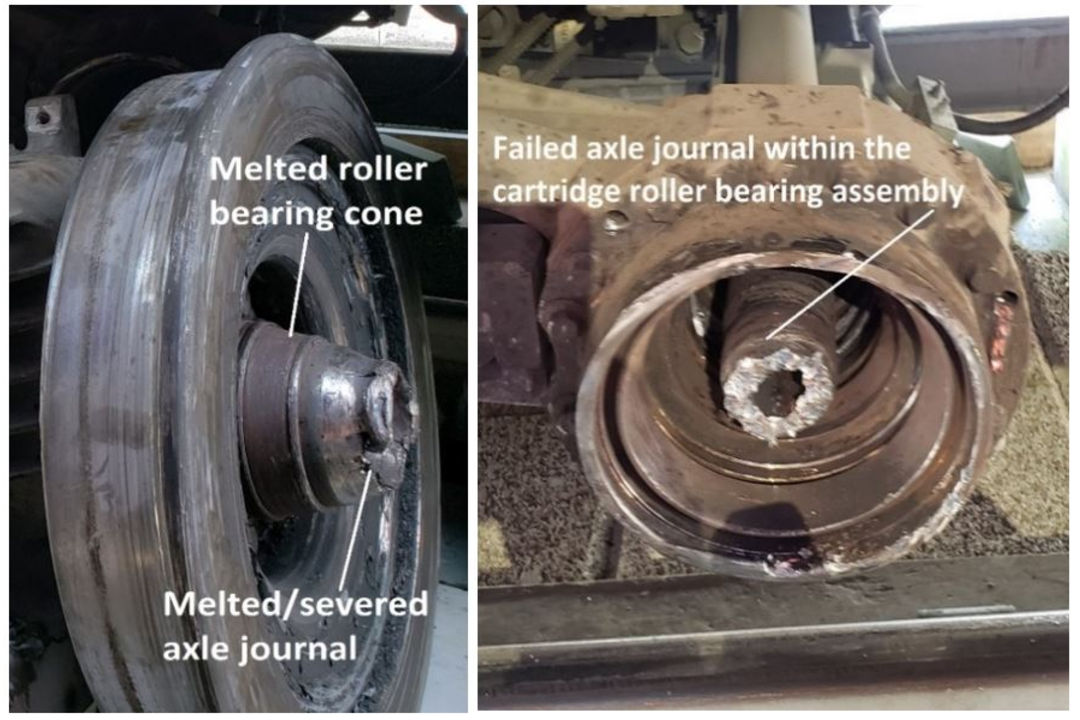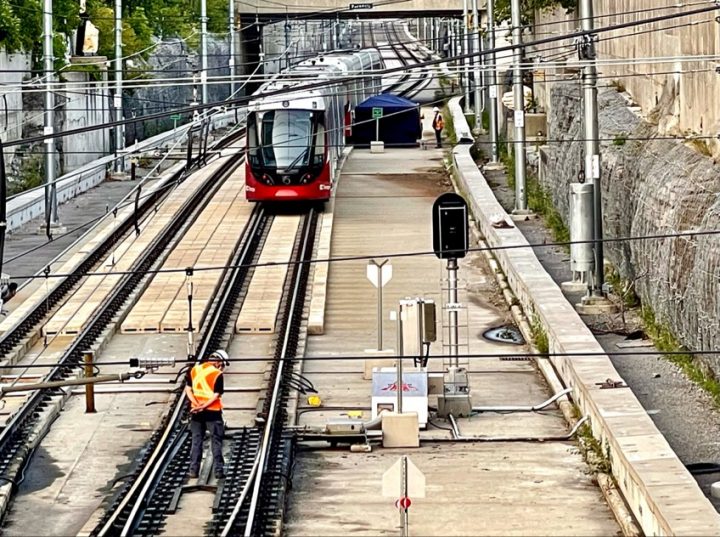A new Transportation Safety Board of Canada (TSB) report into an Ottawa light-rail train’s derailment on Aug. 8 shows that part of the vehicle’s axle system overheated and melted before leaving the track that afternoon.

The TSB, the federal transportation watchdog, released a letter Monday probing into last month’s derailment on the Confederation Line, the first of two major incidents in recent weeks to shut down Ottawa’s LRT system.
On Aug. 8, a train derailed near Tunney’s Pasture Station, taking the Confederation Line out of service for five days while crews worked to identify the issue.
Initial findings pointed to a gap in the axle-bearing assembly on the affected train, leading to nine other vehicles receiving repairs to the same unit.
Now, the TSB’s report shows the train in question was experiencing issues earlier in the day that could have contributed to the derailment.
In the letter, sent to Ottawa’s city manager by the TSB’s director of rail and pipeline investigations Paul Treboutat, the agency explains that an axle on the train “likely failed” around 1:25 p.m. that day as the vehicle was travelling eastward between Cyrville and Blair stations.
The vehicle experienced “multiple wheel slip warnings” during that time, according to a TSB review of the train logs.
The agency’s timeline of events shows that after travelling back the length of the Confederation Line, at 2:50 p.m., “the train operator reported a burning smell” and parked the train at the northbound platform of Tunney’s Pasture.
A technician arrived a short while later and found “burn marks” on a brake disk.
The affected brakes were isolated and the train was removed from service until that evening but it was not inspected during that time, with technicians believing the issue had been identified.
Around 8:30 p.m. that night, after the brakes had been fixed, the technician cleared the train to return to the maintenance and storage yard.
As the vehicle left Tunney’s Pasture and switched from the north to the south track, “the train experienced an unusually rough ride” and derailed, at which point it was brought to a “controlled stop,” according to the TSB report.
Crews then discovered that one of the wheels was no longer attached to the axle.
The connection was severed, the TSB report said, due to a “previously undetected catastrophic roller bearing failure.”
The roller bearings are part of the mechanism that connects the axle of the train to the wheels.
Pictures included in the TSB report show parts of these roller bearings on the affected train overheated and “melted” before the derailment.
These rollers were later found on the track near uOttawa station, suggesting the bearing assemblies failed at some point as the train was heading west that afternoon, back towards Tunney’s Pasture.
The TSB notes that because the bearing assemblies are located on the interior of the wheels, they are not accessible to visual inspection or typical temperature gauges used in monitoring the system.
“Consequently, an overheated roller bearing within the cartridge assembly can potentially fail catastrophically without being observed or detected. As demonstrated in this occurrence, such a failure can also lead to derailment if there is no intervention,” the report reads.
The TSB said that the city had “considered” heat detection equipment during the design phase for the Alstom Citadis Spirit trains, “but it was not identified as a requirement because regular maintenance activities were considered sufficient.”
But the Aug. 8 derailment shows that regular maintenance and visual inspections have “proven to be insufficient to protect against such bearing failures,” according to the report.
The TSB recommends that the city install such heat monitoring tech in Ottawa LRT vehicles going forward, but the federal watchdog can only make recommendations and is not mandated to oversee or approve remediation efforts following its reports.
“The TSB would appreciate being informed of what action, if any, will be taken in this regard,” the report concludes.
Ottawa’s Confederation Line LRT remains down Monday following the most recent derailment, with no timeline yet on when service is expected to resume.






Comments